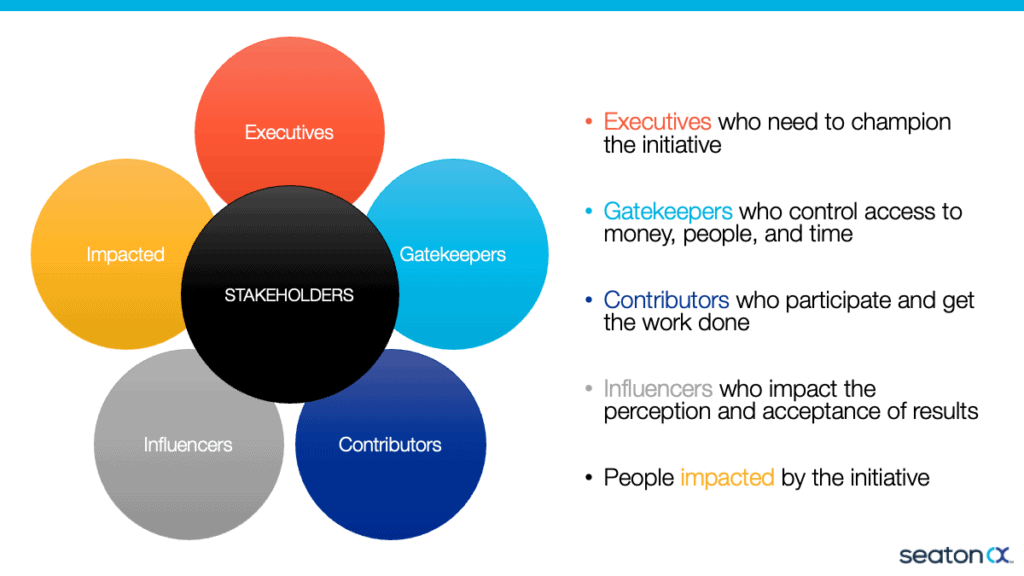Whether you’re creating a customer journey map or leading a customer experience transformation, you can’t do it alone. You need other people to buy-in and take action on your CX initiatives to achieve your CX vision.
Those other people are called “stakeholders” which is a word from 1708 meaning people who have an investment (stake) in the outcome of a business venture. For a modern-day CX leader, stakeholders are the people who have a vested interest in the success—or failure—of the work you’re doing.
If you want to be successful, you need to identify and analyze your stakeholders, so you know how to influence them.
Otherwise, they can sideline your project, sabotage your progress, and cast doubt on your results.
Stakeholder Types
There are 5 different types of stakeholders. Consider all five types of stakeholders and make a list of every person in each type. It’s ok if a single person fits into more than one type.
1. Executives
Executives are the senior leaders in your organization who need to champion the initiative. You need these people to set the tone with other employees that your CX initiative is important work that they should prioritize.
Executives may not be involved in the day-to-day activities, but you should make them crave your CX updates so they stay engaged and informed.
2. Gatekeepers
Gatekeepers are people who control your access to money, people, and time. Sometimes they are also executives, but often they are middle-managers or other department leaders.
For example: you need Victor, the Business Intelligence guru, to pull customer segmentation data. Victor’s boss, who approves which projects he works on, is a gatekeeper. If you wan’t Victor’s help, you need buy-in with Victor’s boss.
3. Contributors
Contributors are easy to identify because they do the actual work. These are the people in the “core team” of your project, who have the responsibility to complete their tasks and action items.
Don’t assume that just because they were “volunteered” for the project that they are bought-in. Contributors can easily sabotage or delay the project if they don’t believe in its value, so you may need to motivate them to follow through.
4. Influencers
Influencers are people in the organization that can impact the perception and acceptance of your results. These people hold sway over how others view your CX initiative.
Is there a respected expert in the company that everyone listens to? Someone who could cast doubt over the impact of your work? Make sure you identify and engage those influencers throughout the project.
5. Impacted
Finally, don’t forget the people impacted by the work you’re doing. These may be individuals or teams who must adopt a new perspective, learn new skills, or even change the way they perform their jobs.
Many changes fail to take root in an organization because they’re not accepted by the people doing the work.

Lead with Influence
CX should be conducting the orchestra, not playing the instruments. To get everyone playing from the same sheet of music, you need to lead with influence.
Each stakeholder type, from executives to those directly impacted by the changes, plays a unique and vital role in the success of any CX initiative. By recognizing and valuing their distinct contributions, CX leaders can foster collaboration, ensure alignment, and drive meaningful change that resonates throughout the organization.
Remember, the strength of your CX initiative doesn’t just lie in the strategy or tools you employ, but in the relationships you cultivate with these key players. By nurturing these relationships, you not only pave the way for the success of your current project but also lay the foundation for future endeavors. Embrace these stakeholders, understand their needs, goals, and values, and together, you can create a customer experience that truly stands out.
